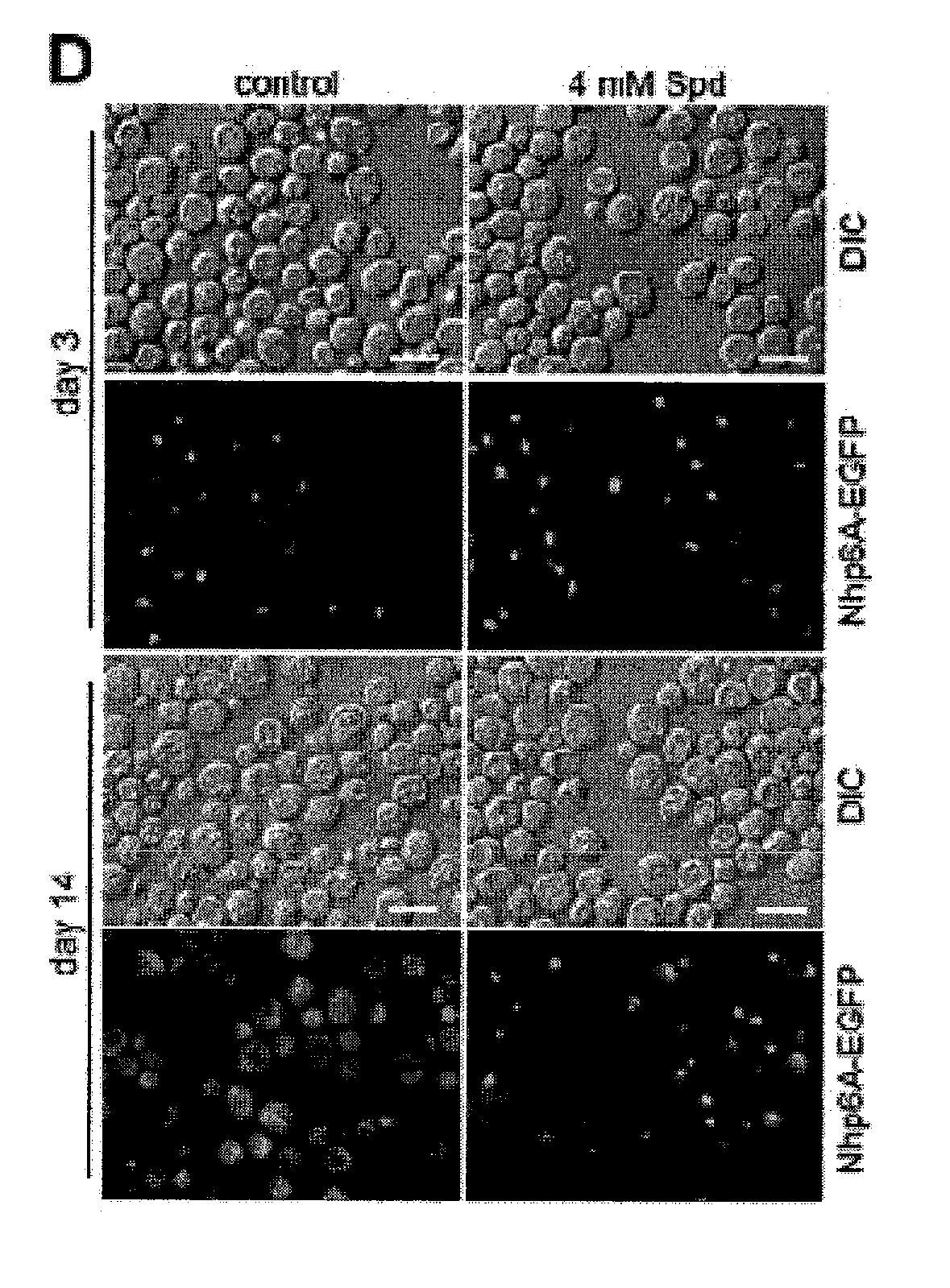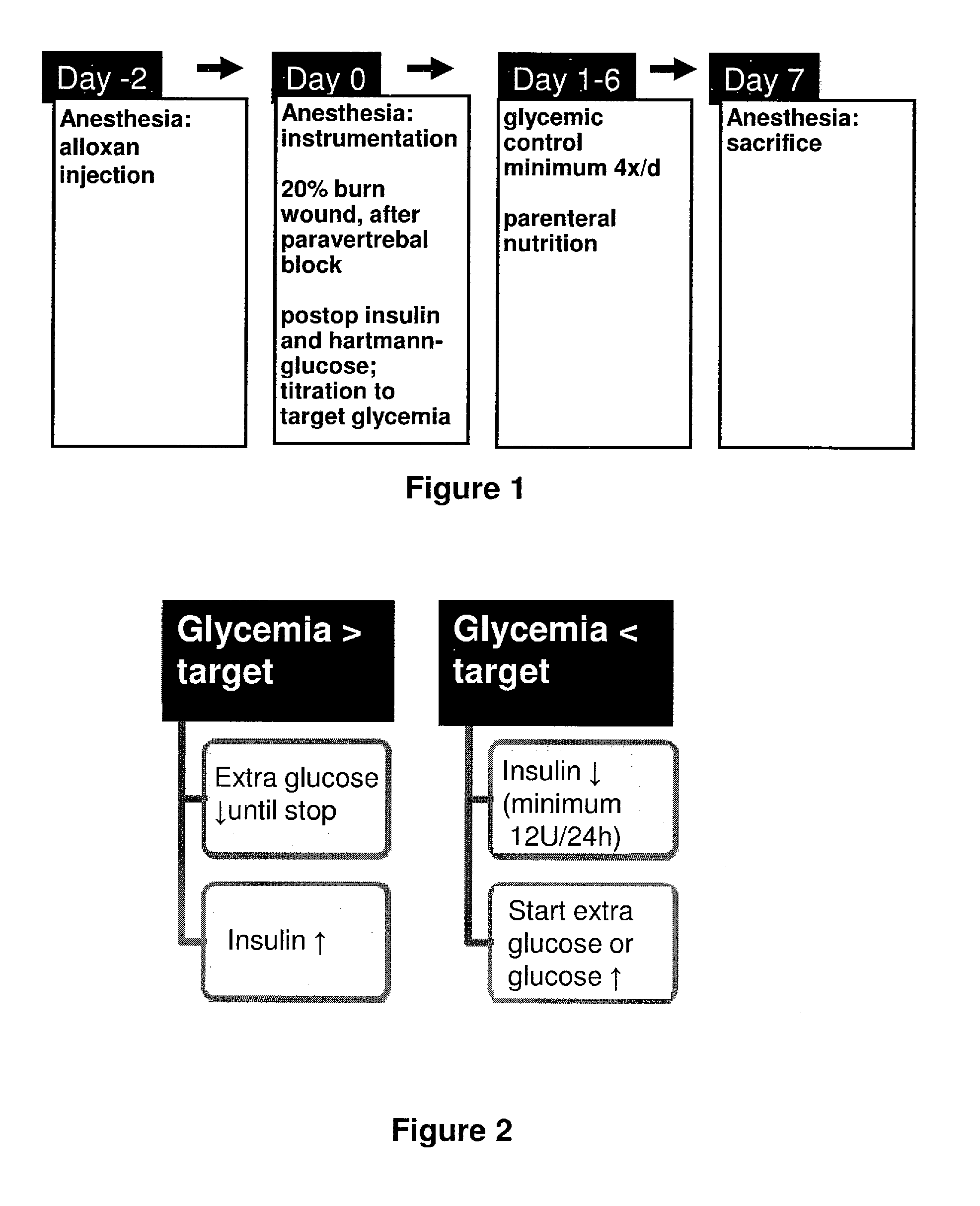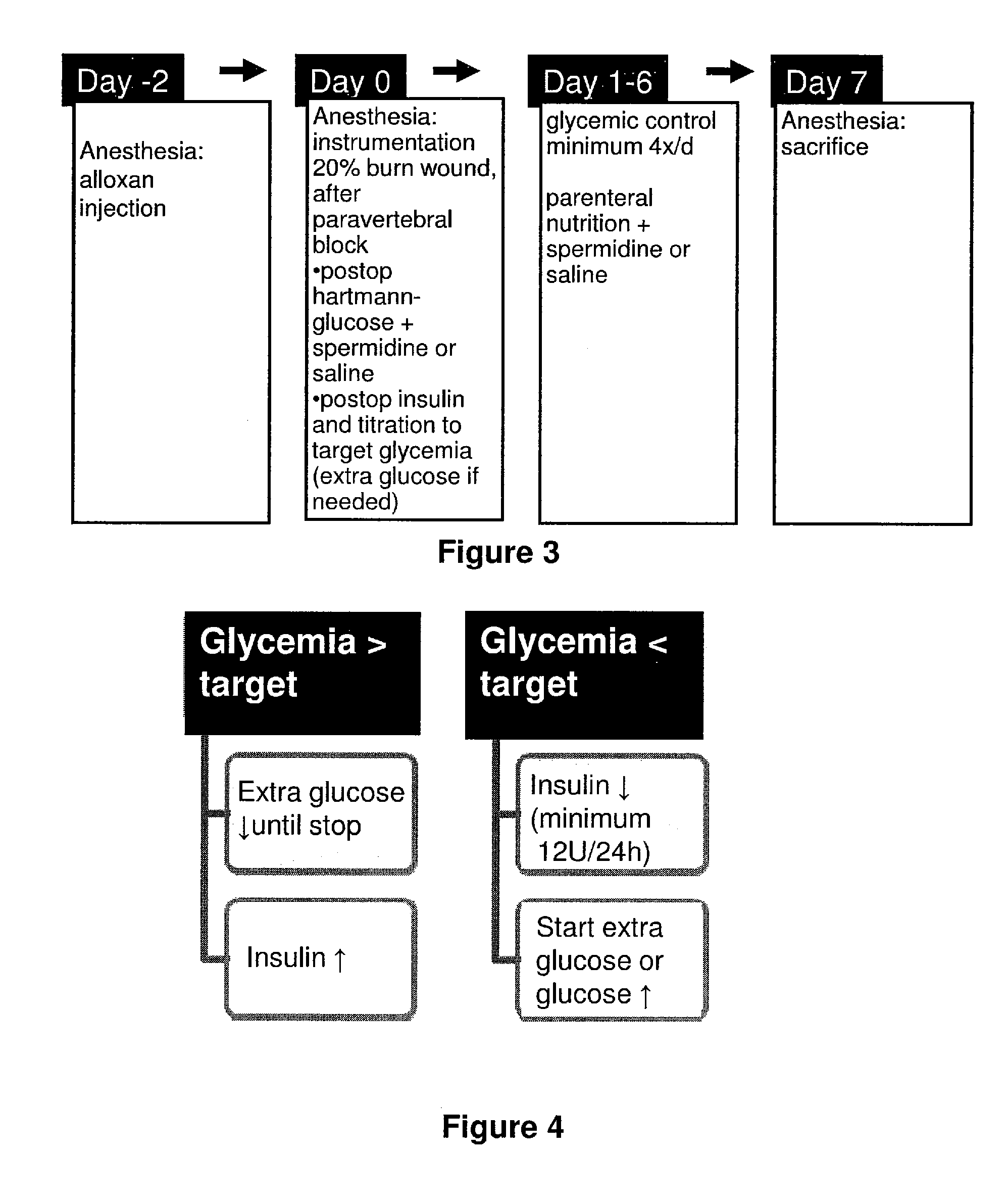Methods and preparations for protecting critically ill patients
a technology treatment methods, applied in the field of life-saving medicaments for critically ill patients, can solve the problems of high mortality of patients who survive this initial phase and enter a chronic phase of critical illness, increase the risk of organ failure and death, and introduce treatments to improve weakness, so as to prevent mitochondrial dysfunction, prevent mitochondrial dysfunction, and normalize the plasma spermidine level
- Summary
- Abstract
- Description
- Claims
- Application Information
AI Technical Summary
Benefits of technology
Problems solved by technology
Method used
Image
Examples
example 1
Animal Model for Critical Illness
[0327]Our research group previously developed an animal model of critical illness that has shown to mimic the dynamic endocrine, immunological and metabolic changes characteristic of human critical illness. In this animal model we investigated the effect of critical illness on spermidine levels and the effects of spermidine-administration during critical illness on survival, organ function (clinical, biochemical, and cyto / histopathological effects), and on metabolic, inflammatory / immunological and cellular pathways. Animals were treated according to the “Principals of Laboratory Animal Care” formulated by the U.S. National Society for Medical Research and the “Guide for the Care and Use of Laboratory Animals” prepared by the National Institutes of Health. The protocol was approved by the K.U. Leuven Ethical Review Board for Animal Research. Adult male New Zealand White rabbits, weighing approximately 3 kg, were purchased from a local rabbitry, were h...
example 2
Induction of Critical Illness in a Rabbit Animal Model
[0330]In our animal model, critical illness was induced by placing intravascular catheters, selectively destroying pancreatic β-cells by alloxan, followed by burn injury. As mentioned, this model revealed the dynamic endocrine and metabolic changes characteristic of human critical illness, including hyperglycemia and endogenous insulin deficiency. Alloxan is a toxic glucose analogue, which selectively destroys insulin-producing cells in the pancreas when administered to rodents and many other animal species. The administration of alloxan was necessary to control both blood glucose and plasma insulin levels independently. The application of the burn wound is done 48 hours after alloxan-injection, at which time alloxan has done irreversible damage to the β-cells (selective β-cell necrosis, phase 4 after alloxan-injection). After imposing a burn wound, animals were brought to hyperinsulinaemia, because this reflects most the human s...
example 3
Measurement of Spermidine Levels in Critically Ill Rabbits
[0333]At 13:00 1 h of Day 1. (FIG. 2), Hartmann solution was replaced by parenteral nutrition infused at 10 ml / h. We chose total intravenous nutrition because this is the only way to assure equal nutrient intake of the rabbits. Parenteral nutrition contained 35% Clinomel N7 (Baxter; Clinitec, Maurepas Cedex, France), 35% Hartmann solution, and 30% glucose 50%. All intravenous infusions were prepared daily under sterile conditions and weighed before and after administration for exact quantification of intake.
[0334]Parenteral nutrition was changed daily at 13:00±1 h of Days 2-7 (FIG. 2) at which time the amount of parenteral nutrition and supplementary glucose, and the amount of insulin given was recorded.
[0335]At 14:00±1 h of Day 7 (FIG. 2), animals were anesthetized using half of the above mentioned dose of anesthetics intravenously, and the animals were weighed. After tracheostomy, animals were normoventilated (small animal ...
PUM
| Property | Measurement | Unit |
|---|---|---|
| Mass | aaaaa | aaaaa |
| Weight | aaaaa | aaaaa |
| Weight | aaaaa | aaaaa |
Abstract
Description
Claims
Application Information
 Login to View More
Login to View More - R&D
- Intellectual Property
- Life Sciences
- Materials
- Tech Scout
- Unparalleled Data Quality
- Higher Quality Content
- 60% Fewer Hallucinations
Browse by: Latest US Patents, China's latest patents, Technical Efficacy Thesaurus, Application Domain, Technology Topic, Popular Technical Reports.
© 2025 PatSnap. All rights reserved.Legal|Privacy policy|Modern Slavery Act Transparency Statement|Sitemap|About US| Contact US: help@patsnap.com



